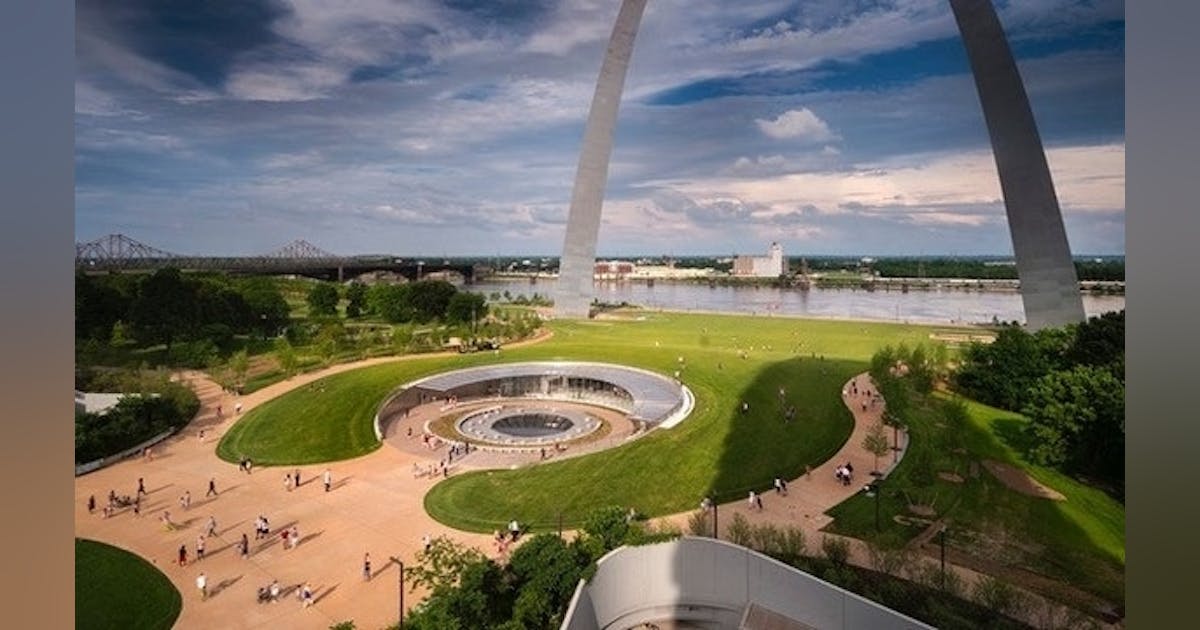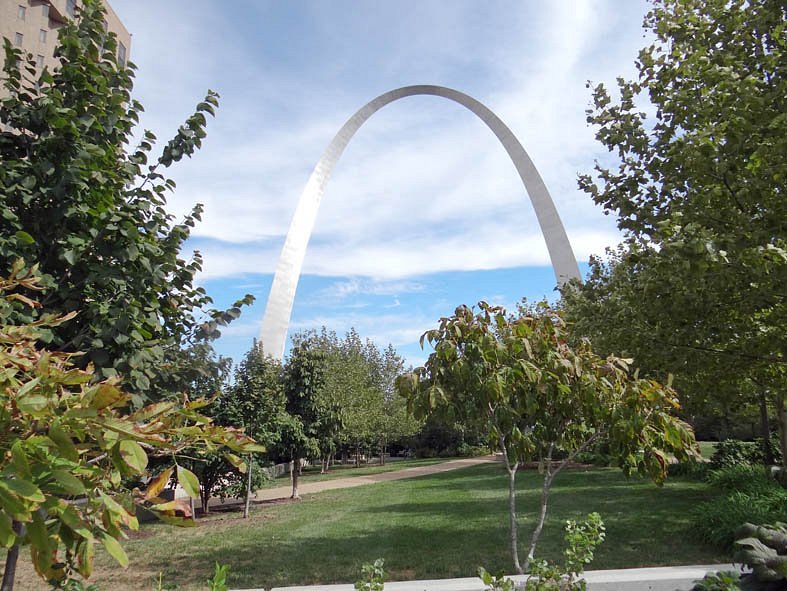Where to Park at Gateway Arch National Park: Parking Guide for Tourists
Where to Park at Gateway Arch National Park: Parking Guide for Tourists
Blog Article
Discover the Historic Significance of Portal Arc National Park in St. Louis, MO
The Gateway Arc National Forest in St. Louis, Missouri, functions as a profound symbol of America's historic story, enveloping styles of westward development and exploration. This architectural marvel, completed in 1965, not just commemorates essential events such as the Louisiana Purchase and the Lewis and Clark Exploration but additionally mirrors the wider goals of a country in improvement. As we explore its diverse relevance, one must think about how this famous framework has influenced both the social material of St. Louis and the cumulative memory of the USA. What much deeper stories exist under its towering silhouette?
The Birth of the Portal Arc
Often considered an iconic icon of St. Louis, the Entrance Arc was conceived as a monument to recognize the westward growth of the United States. The concept for the Arch arised during the 1930s among discussions regarding renewing the riverfront area. Engineer Eero Saarinen's design was picked in 1947 after a national competitors, mirroring both modernist aesthetic appeals and historical importance.
Construction started in 1963, using stainless steel to develop a streamlined, minimalist type that rises 630 feet into the sky. The framework's special hyperbolic shape was meant to represent the gateway to the West, personifying hope and possibility. The Arc was finished in 1965, and its commitment happened on October 28, 1965, marking a turning point in American architectural history.
In 2018, the location surrounding the Arc went through substantial renovations, transforming it into Portal Arch National Park. This update boosted site visitor availability and involvement, solidifying the Arch's function as a main social spots. The Portal Arc not only stands for St. Louis but additionally functions as a testament to the country's trip, standing as a sign of inspiration and cumulative memory.
Icon of Westward Expansion
The Gateway Arc stands as a powerful icon of westward development in the USA, encapsulating the spirit of exploration and aspiration that identified the 19th century. Erected in St. Louis, Missouri, the Arc honors the city's function as a critical beginning point for inhabitants heading westward along the Oregon and Santa Fe Trails.
As pioneers ventured into the undiscovered areas, they carried with them fantasizes of success and clean slates, driven by the concept of Colonialism. The Arch goes beyond mere architectural beauty; it symbolizes the victories and obstacles faced by those that looked for possibility in the large, unknown frontier.
The structure's layout evokes the image of a gateway, welcoming travelers and dreamers alike to discover the possibility of the American West. It serves as a pointer of the transformative trip that formed the nation, marking the shift from a predominantly agrarian society to a blossoming land of innovation and industry.

Building Innovation and Style
Impressive in its layout, the Gateway Arc is an exemplar of building advancement that perfectly blends type and feature. Designed by designer Eero Saarinen and structural engineer Cass Gilbert, this famous monolith stands at 630 feet, making it the highest arc on the planet and a testament to contemporary engineering expertise. Its hyperboloid shape not just produces an aesthetically striking shape against the St. Louis horizon yet likewise serves a vital architectural objective, distributing weight equally and enhancing security.
Built from stainless steel, the Arc's sleek, reflective surface area catches the altering light throughout the day, developing a dynamic aesthetic experience. The option of materials and ingenious building and construction strategies, including using premade sections, assisted in the Arch's conclusion in 1965, in spite of the difficulties postured by its ambitious layout.
Visitors can rise to the monitoring deck using an unique cable car system, experiencing scenic sights of the Mississippi River and the city listed below. The combination of aesthetic appeal and functional layout exemplifies Saarinen's vision of developing a monument that not just celebrates America's westward development but additionally stands as a spots of architectural accomplishment in its own right.
Social Impact on St. Louis
Located in the heart of St. Louis, Gateway Arch National Park offers as an important social example for the city and its citizens. The Arch is not just a building wonder; it represents St. Gateway Arch National Park parking. Louis's historic function as a portal to the West and mirrors the city's rich heritage. Its existence has promoted a feeling of pride among locals and has ended up being an essential part of the city's identity
The park draws in millions of visitors every year, adding substantially to the regional economic climate and cultivating a vivid social scene. Events, festivals, and academic programs focused around the Arch promote community involvement and cultural exchange, while the bordering landscape works as a celebration room for varied populations.
Moreover, the Gateway Arch has inspired plenty of musicians, filmmakers, and artists, installing itself in the cultural material of St. Louis. It has actually been featured in numerous forms of media, symbolizing strength and progression. By bridging the past with the here and now, Gateway Arch National Forest not only celebrates St. Louis's historic story but likewise remains to shape its cultural evolution, making it a sign of inspiration for future generations.

Gateway Arch in American Memory
A symbol of American aspiration and expedition, the Entrance Arch holds a famous area in the collective memory of the nation. Created by engineer Eero Saarinen, the Arc was finished in 1965 and stands as a testimony to America's westward growth and the spirit of the frontier. Its smooth, modernist style contrasts with historical structures, recording the discover this significance of development and development that characterizes the American experience.
The Arch not only commemorates the Louisiana Acquisition and the Lewis and Clark Exploration yet likewise embodies the struggles and triumphs of plenty of people who added to the nation's growth. It functions as a focal factor for nationwide pride, drawing in numerous site visitors every year that look for to get in touch with this symbol of American history.

Conclusion
To conclude, Entrance Arch National forest acts as a powerful sign of America's westward expansion and the historical stories associated with it. Its building development and layout show the ambitions of a country, while its social impact resonates within the city of St. Louis and beyond. Gateway Arch National Park parking. As a monument to the Louisiana Acquisition and the Lewis and Clark Expedition, the Gateway Arc remains to motivate and enlighten future generations concerning the transformative journey of the USA
Please visit one of our local supporters - Axis Spine And Orthopedics Surgeon St Louis Mo
Report this page